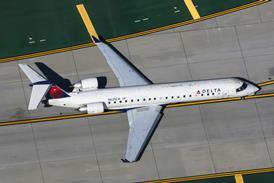Pakistan has reportedly reached a deal with China to buy 36 Chengdu J-10B fighters in a deal worth around $1.4 billion.
If confirmed, this would form the first phase of a purchase that includes options for several dozen more aircraft and result in Islamabad eventually acquiring around 150 of the multirole fighters.
To be designated as FC-20s in Pakistan, the aircraft will be upgraded versions of the J-10 fighter that officially entered Chinese air force service in early 2007. The type is China's most advanced indigenously developed military aircraft.
Deliveries to Pakistan are likely to begin from 2014-15, but the country is unlikely to have any workshare in the programme.
China has been a major supplier of aircraft to Pakistan's armed forces for more than 30 years, supplementing purchases of Dassault Mirage fighters in the 1970s and Lockheed Martin F-16A/Bs in the 1980s.
Relations with the West cooled in the 1990s, when Washington imposed an arms embargo after Pakistan tested a nuclear bomb. Relations improved earlier this decade, when Islamabad emerged as a key ally in the war in Afghanistan.
Last year, Pakistan confirmed an order for 18 new F-16C/D Block 52 fighters, with options for another 18. It is also buying several refurbished F-16s, and Lockheed is also under contract to upgrade 34 F-16A/B Block 15s.
However, Islamabad has also maintained its close relationship with China. The partners have jointly developed the Chengdu/Pakistan Aeronautical Complex (PAC) FC-1/JF-17 fighter, with Islamabad having received its first two Chinese-built examples in March 2007. It has since taken delivery of around a dozen JF-17s.
The first example to be manufactured by PAC will fly before year-end, and Islamabad will eventually buy at least 150 domestically produced fighters. These will replace its air force's ageing fleets of Nanchang A-5s, Chengdu F-7s and Mirage IIIs and Mirage Vs.
The JF-17 will be capable of carrying a variety of conventional and precision-guided bombs, plus air-to-air and anti-shipping missiles of both short- and beyond-visual ranges.
Source: Flight International























